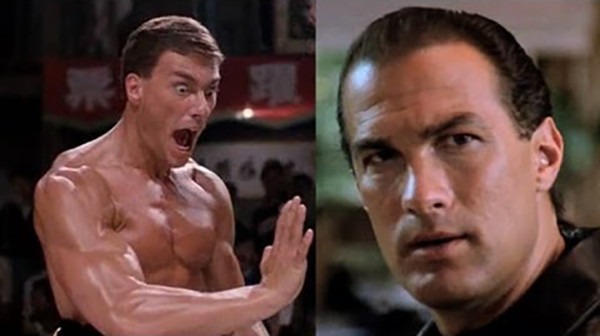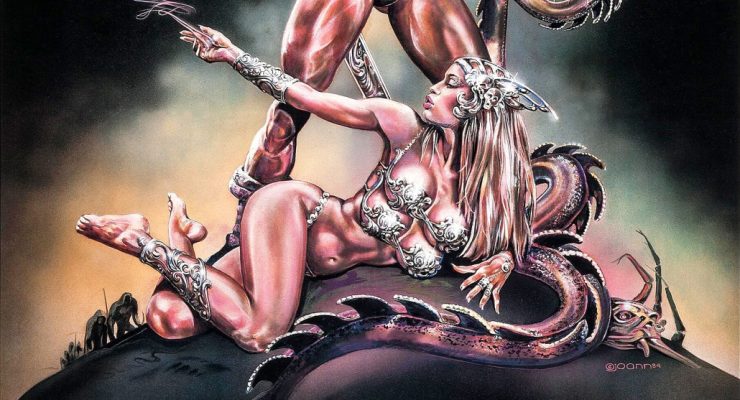Trevor Hogg chats with Yann Danh about pursuing a childhood obsession as a career and for an added bonus the feature showcases his French short film A Tout Prix (At All Costs)…
“My mom is a storekeeper and my stepdad is a barman,” states French filmmaker Yann Danh who was 10 years old when he first became aware of the cinema. “Watching movies became almost compulsive; I used to watch three or four a day such as Once Upon a Time in America [1984], Terminator [1984], Evil Dead [1981], 2001 [1968], Serpico [1973], Touch of Evil [1958], Once Upon a Time in the West [1968], Taxi Driver [1976], and Bruce Lee movies.” The plan was to pursue a career in the video game industry changed at the age of 16. “After making my first short film [in high school], I knew cinema was what I wanted to do for the rest of my life.” Every film project has been educational. “I learned how to make a shot list, speak to an actor, work with a crew, and to adapt because even when you have planned everything there is always problems.” A particular job experience led Yann Danh to co-write and direct a short film thriller in 2012 called A Tout Prix (At All Costs) revolving around three former employees who take an ex-CEO hostage and demand his golden parachute package as ransom.
“A few years ago I was working in a big company that managed all of the data for big banks. I was shocked by my colleagues’ mentality and the way the managers were doing their job. They didn’t mind putting the blame on you in front of their superior and didn’t give a damn if you lost your job. Plus, I knew a lot of people who were so obsessed by their own evolution in the company; they crushed their colleagues without any sort of remorse. It was nuts! When there was the economic crisis [in 2008] it became worse. Our President, at that time, used to discriminate against different groups in the population to explain why there were problems in our society. It was just a strategy. But a lot of people, who don’t question anything, believed him. The society was divided. The mood was really strange at that time. There was a lot of tension everywhere and it’s still the case. That’s how my co-screenwriter [Mahi Bena] and I have the idea for At All Costs.”
With the dominate themes being about manipulation, individualism and alienation, the thriller genre was a natural fit for the story. “I always loved ‘film noir’ because everything is always ‘grey’. It’s a genre about people and society. You can tell stories about people struggling to survive in an entertaining way. However, it can be a ‘cheap’ genre. I think it’s Goddard who said, ‘All you need for a movie is a gun and a girl.’ That’s why you see a girl in my film with a rifle!” Clues have to be planted in a way that does not giveaway the ending but make sense upon reflection. In The Usual Suspects [1995] there is this scene where we see Verbal [Kevin Spacey] in the office watching the wall in front of him while he’s waiting for the cop. The first time you see the scene, you think: “He’s waiting and is looking at the wall because he is bored.’ But unconsciously you’re being prepared for the ending. When you see the film a second time you notice it. It’s a clue but at first you don’t understand it the right way. It’s simple, subtle, and worked so well! It’s the kind of ‘trick’ I had in mind!”
“With Vincent Vieillard-Baron [Director of Photography] we spoke a lot about the colours, textures and the feeling we wanted to have during the film,” explains Yann Danh. “At one point I was thinking my film as like a ‘fairy tale’. The three friends arrive in a big, splendid house. It’s a sunny day. Everything looks good. As we advance through the film the colour disappears. I wanted a cold mood in the end. Philippe Gaulier [a great and talented friend of mine] made the design of the Mask. We wanted something that could be used to hide their faces and was impressive. I wanted something special based on animals. There was this idea: They are like pissed off sheep. At first I was worried it would look funny. But quickly we were convinced it was frightening. With Cedric Maugis [one of the VFX guys] I spoke about ‘invisible special effects.’ I didn’t want the audience to feel, ‘There’s a special effect shot.’ Louis Pesnot [film editor] and I spoke a lot about the rhythm of the film. We wanted the audience to feel the intensity and the violence of that day. But to preserve the tension you can’t go fast all the time. You need to have quiet moments so you can feel the acceleration. Yov Moor is a great post-production supervisor and a talented colourist. Yov was respectful of Vincent’s work and provided nuances that the film needed.”
“The sound design was made by Arnaud Julien who is an amazing guy,” remarks Danh. “We spoke about one film: Raging Bull [1980] and the amazing boxing scenes. I told him, ‘I don’t want realism. I want the audience to feel and experience the moment as much as we can.’ I love sound. It’s like a picture. You can tell so much to an audience with one sound. It’s an incredible tool. The film score was made by the young [22] and talented Anthony D’Amario. I met him by my little brother and I was amazed by the talent he had. I proposed Anthony to work on the score but first I wanted to make a test. At that time we were one year before the shooting. I told him I’d like to have a strong theme… Very symphonic! We spoke about the idea that we needed something almost ‘military’. With Anthony we spoke a lot about the work of John Ottman [X-Men: Days of Future Past], Hanz Zimmer [Inception], and Thomas Newman [Road to Perdition]. Very quickly Anthony sent me the main theme. It was not finished but he found the main theme! I know that one of the actor [Franck Sarrabas] used to listen to the theme on his iPod during the shooting to feel the right mood. Then as soon as I had edited scene, I sent it to Anthony so he could start working on it.”
Two sequences were pleasant surprises for the man behind the camera. “The first one [torture scene] is almost shot by shot what I had drawn in the storyboard,” reveals Yann Danh. The second one [Mercier’s dying scene] is because that day I had to drop my shot list, and storyboard. I didn’t have the time to do what I intended to do, and had to adapt. Instead of 13 shots, I decided to do the scene the way you see it in the film. At first I was happy. I was like, ‘I should have done it like that from the beginning!’ A few days later when the shooting is over and you’re alone at home you start thinking about all the shots you’ve got, the shots you were supposed to do and all the shots you had to forget. For weeks I was scared that I made a bad decision. One night I couldn’t sleep. I went into my office, edited of the ‘death scene’ and was amazed that it was working! What a relief!”
“If you don’t have good actors devoted to the film you can’t make a good film,” believes Yann Danh who grew up watching Al Pacino (The Godfather) and Robert De Niro (The Good Shepherd). I love people with ‘strong faces’ and expressive faces. I love my cast: Franck Sarrabas, Pascal Henault [A Prophet], Simon Frenay, Marc Duret [Nikita], Bruno Henry [Top Floor Left Wing], Fatima Adoum [Sherlock Holmes: A Game of Shadows], and Onna Clairin. Currently, the native of Versailles, France is working on his feature length debut Implacable. It is a thriller like At All Costs but with more action, surprises, but most of all, I hope to bring you more emotions. It will be a more compelling film.” Danh remarks, “I am a lucky guy! I’m doing what I love and I had a ‘Golden A-TEAM’ on At All Costs. I thank them all! And of course my family and my lovely wife! Thank you very much Trevor. I’m a fan of Flickering Myth so it means a lot to me to be interviewed here. It was a cool interview!”
Many thanks to Yann Danh for taking the time for this interview.
To learn more visit the official Facebook site for A Tout Prix and Twitter for Yann Danh.
Trevor Hogg is a freelance video editor and writer who currently resides in Canada.











